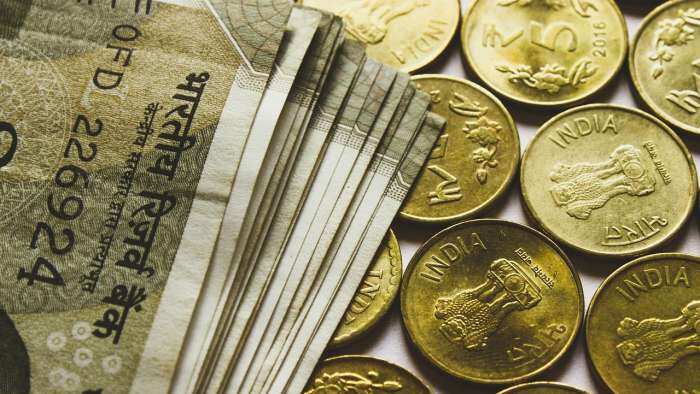Your home loan EMIs to become cheaper? BofAML has some good news
With the NDA government winning General Elections 2019, predictions are being made that its focus would be on further stabilizing banks lending rate.

Your loan rate and RBI's policy repo rate go hand-in-hand. To be precise, you and your bank have similar fates when it comes to borrowing. But the only difference is that, your bank borrows from RBI, while you depend upon them for financial assistance. A new trend has emerged which seems to be a good news for both you and your lender. With the NDA government winning General Elections 2019, predictions are being made that its focus would be on further stabilizing banks lending rate. Also, the June 2019 policy, set to announced by RBI, is expected to have yet another rate cut on table.
Indranil Sen Gupta and Aastha Gudwani, economists at Bank of America Merrill Lynch (BofAML) said, "We expect the government to focus on cutting lending rates (50bp by March 2020) with the end-2018 liquidity crunch slowing growth. The RBI MPC should cut rates 35bp on June 6 (and 100bp in 2019), with May inflation tracking 3.3%. It should also infuse US$2-3bn of durable liquidity every month as it is doing."
"We grow more confident of our call of lending rates coming off (by 50bp BofAMLe) to support recovery after PM Modi’s historic victory (of 303/543 seats in parliament) in the general elections. This is the first time in 35 years that a government has returned to Delhi with a majority of its own. The BJP manifesto has itself committed to step up investment by reducing the cost of capital. Looking ahead, we expect the RBI MPC to cut 35bp (up from 25bp earlier) on June 6 (and 100bp in 2019) with May inflation tracking a low 3.3%. Second, it should continue to inject US$2-3bn of durable liquidity a month to pull the money market to surplus liquidity," added the duo.
Three likely scenarios were identified by BofAML economists for lending rate cuts. These are:
1. Lower RBI MPC rates:
Expect the RBI MPC to cut rates by 35bp on June 6 (100bp in 2019) to pull down yields and provide room for lending rate cuts. Also, the
August after the rains will also set a new course for rates.
2. Sufficient durable liquidity:
BofAML economists liquidity model forecasts US$35bn in FY20 (US$8.6bn FYTD) to fund 16% loan demand.
3. Timely,durable liquidity in 1HFY20:
This will assure the market in the 'busy' 2HFY20 season. Re1 of RBI money typically takes 6 months to multiply into Rs 5 of credit. BofAML economists liquidity model estimates that the RBI has to infuse US$2- 3bn a month through FX swaps and OMO as it is doing.
" We expect the RBI to allow this after cash demand abates after the elections end in May," the economists above said.
When RBI makes a cut, this in return helps banks borrowing from the central bank cheaper, which lowers the cost of funds. The lender derive interest rates on loans like home, personal, vehicle and other products taking into consideration the cost of funds. It needs to be noted that the interest rate banks charge on loans must be higher than the interest rate they pay to depositors. Thereby, lower cost of funds make banks more attractive.
If cost of funds is lower, this gives room to banks in passing on the benefit of repo rate to customers.
That said, ideally, your EMIs should come down on home, personal and car loan. But you and I would definitely wish this turns into a reality soon.
Get Latest Business News, Stock Market Updates and Videos; Check your tax outgo through Income Tax Calculator and save money through our Personal Finance coverage. Check Business Breaking News Live on Zee Business Twitter and Facebook. Subscribe on YouTube.
RECOMMENDED STORIES

SBI Senior Citizen Latest FD Rates: What senior citizens can get on Rs 7 lakh, Rs 14 lakh, and Rs 21 lakh investments in Amrit Vrishti, 1-, 3-, and 5-year fixed deposits

SBI Guaranteed Return Scheme: Know how much maturity amount you will get on Rs 2 lakh, 2.5 lakh, 3 lakh, 3.5 lakh and Rs 4 lakh investments under Amrit Vrishti FD scheme

Power of Compounding: How soon will monthly SIP of Rs 6,000, Rs 8,000, and Rs 10,000 reach Rs 5 crore corpus target?

SIP+SWP: Rs 10,000 monthly SIP for 20 years, Rs 25 lakh lump sum investment, then Rs 2.15 lakh monthly income for 25 years; see expert calculations

SBI Senior Citizen FD Rate: Here's what State Bank of India giving on 1-year, 3-year, 5-year fixed deposits currently
02:24 PM IST








 RBI MPC Meeting: What happens to your home, car loan rates after RBI keeps repo rate unchanged
RBI MPC Meeting: What happens to your home, car loan rates after RBI keeps repo rate unchanged Home Loan: Are rising interest rates affecting the affordable housing sector?
Home Loan: Are rising interest rates affecting the affordable housing sector? EPFO: Is prepaying a loan from EPF money a wise decision?
EPFO: Is prepaying a loan from EPF money a wise decision? Home Loan: What are the penalties if you miss your home loan EMI?
Home Loan: What are the penalties if you miss your home loan EMI? Financial Planning: How you can get the maximum tax benefits from leveraging different loans
Financial Planning: How you can get the maximum tax benefits from leveraging different loans